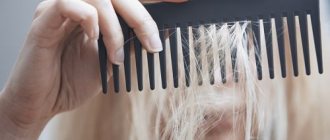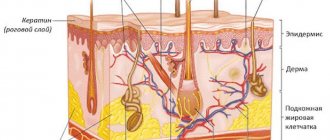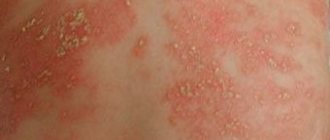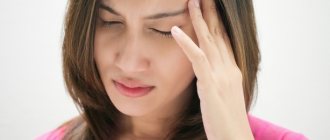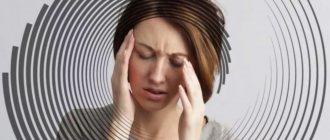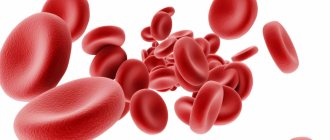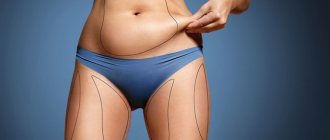Many women, losing their hair, suffer in silence and try to hide the problem by changing their hairstyle. But the sooner medical assistance is provided, the greater the chances of successful treatment.
Most often, women experience not androgenetic alopecia, to which men are more susceptible, but a diffuse form, when after eliminating the cause of hair loss, hair begins to grow again. This explains why hair restoration methods for women differ from those indicated for men.
Every day a person loses 50–100 hairs; exceeding this norm is a dangerous symptom.
Hair loss is not as rare a problem as many people think. The disease occurs in 5% of women under 30 years of age and in almost half over the age of 70 years.
Hair loss not only causes serious emotional stress, but can also be an indicator of health problems. Deficiency of iron, vitamin D, zinc, stress, autoimmune disorders, thyroid disorders are all possible causes of hair loss.
Hair loss in women is treated in several ways; we will look at the most effective ones today.
Why might this problem occur?
Losing a small amount of hair is an absolutely normal physiological phenomenon that every person experiences. According to statistics, about 100 units are lost every day, and this is considered the human norm. Experts in the field of trichology recommend performing a simple test: pay attention to the tip. If there is no white nodule (bulb) on it, then do not worry and consult a doctor. If it is detected, it is better to stop washing your hair for several days and test again. A repetition of the previous situation serves as a direct indication for visiting a trichologist, who can accurately determine what causes hair loss in women and how to treat the resulting pathology.
There are a huge number of etiological factors that cause this problem. The disease can be caused by exposure to both internal and external factors. Some scientists are inclined to believe that hair loss is one of the elements of aging. However, baldness at an early age does not belong to this theory, but is certainly a manifestation of a pathological condition. Therefore, a symptomatic fight against this problem will be ineffective, since the main etiological factor is not eliminated. It is extremely important to visit a doctor in a timely manner, because female alopecia is more susceptible to drug therapy. It is impossible to determine the treatment and the reason why a woman is experiencing severe hair loss on her own.
Why hair falls out: interesting facts
First of all, in order to answer the question of why hair falls out on the heads of men and women, you need to understand how this part of the human body is structured, what it consists of, and what features it has.
Hair is a living part of the body, like, for example, eyes or lips. It is distinguished by the absence of the circulatory and nervous systems and is an appendage of the skin. Some information about hair:
- The hair is divided into two parts: the root is located inside the skin, the shaft is located outside;
- The hair follicle is a component of the root - the very part from which hair grows;
- Each bulb is approached by a structure that feeds it: a papilla with vessels;
- Follicle (hair follicle) is a sheath for the hair root, connected to the sebaceous and sometimes sweat glands.
The hair shaft consists of three layers:
- Medula
- the medulla running in the very center of the hair. Due to the air bubbles contained within it, it provides thermal conductivity to the hair.
- Cortex
- a huge number of keratin fibers, numbering in the thousands. They twist together, intertwining like a rope. In fact, this layer makes up 4/5 of the total hair structure. In addition, this is where the pigments that determine their color are contained.
- Cuticle
- the outer layer necessary to provide protection to the hair. In addition to the barrier function, it is also responsible for the appearance, since it is located on the outside, and, in addition, it imparts shine and hardness. The cuticle consists of keratin plates. The stronger these elements, the stronger the hair.
Chemically, creatine and protein predominate in hair, accounting for almost 4/5 of the total structure. In addition to them, there is a significant percentage of water (up to 15%), about 1/10 fat and only 1%, which is responsible for color - pigment.
The life cycle of hair is usually divided into three main phases:
- Anagen phase - when hair is formed from cells, during this period the length and thickness are determined;
- The catagen phase is a calm and short-lived state, during which beneficial substances cease to flow to the hair;
- The telogen phase is the final stage in the life of a hair, at the end of which it falls off.
Then the birth of a new hair begins. The average number of hairs that can grow from one follicle is 25.
Interesting facts about hair:
- Each hair is constantly growing, but it can slow down and speed up, and this depends not only on the season, but even on the time of day;
- All people's hair grows at different rates depending on the individual characteristics of the body, but on average it is about 15 millimeters in 30 days;
- The average person has between one hundred and one hundred and fifty thousand hairs on their head;
- Blondes have more hair than others, redheads have the least;
- Over the course of a day, a healthy person can lose approximately 75 hairs.
Endocrine system disorders
Hormones control the body, maintaining its normal functioning throughout life. Therefore, even their slight decrease or increase in the blood entails negative consequences. One of the most common manifestations of pathology is the loss of the hairy component, which is most sensitive to changes in the activity of the endocrine glands. As a rule, the cause is an increase in testosterone and a decrease in estrogen, which are the source of beauty and youth for any woman. This imbalance may occur due to:
1. Childbirth - hormonal imbalances are an integral part of the life of a new mother. During pregnancy, the level of estrogen in the body increased significantly, which gave the curls unprecedented strength and elasticity. After childbirth, its concentration decreases sharply, after which significant loss of strands occurs. 2. Dysfunction of the ovaries or adrenal glands - these are the organs that are responsible for production, so if their functioning is disrupted, this ailment can occur. 3. Menopause - often the cause of very severe hair loss in women is the cessation of menstruation. This is due to the decline of ovarian function, which occurs due to physiological age-related changes. 4. Damage to the thyroid gland; 5. Conducting radiation or chemotherapy. Alopecia is the most common side effect of this type of treatment. 6. Taking oral contraceptives or other hormonal medications - as a rule, baldness is associated with the completion of the course or their abrupt cancellation.
After stopping medication, a “withdrawal symptom” occurs, which is based on the easy intake of estrogen from the environment. The body usually gets used to such “doping”, so stopping its use causes a sharp decrease in the estrogen series.
7. Heredity - quite often a predisposition to so-called androgenic attacks of unknown etiology is revealed. Therefore, diagnosing this problem in close blood relatives serves as an alarming signal and a reason to pay special attention to your vegetation. 8. Frequent stress, emotional stress, lack of rest and lack of sleep. If your hair begins to fall out a lot, this is a direct result of the condition described.
Cortisol, which is secreted by the adrenal glands under the influence of any negative factors, is responsible for the negative background of the human body. It promotes an active increase in the level of testosterone and its derivative, dihydrotestosterone, circulating in the blood.
Why does hair fall out after childbirth?
Childbirth is a difficult process, and the postpartum state is not easily tolerated by the body. You shouldn’t be surprised why a nursing mother experiences hair loss - this is a natural process, often accompanied by the appearance of significant bald spots.
- The main reason is changes in hormonal levels.
Pregnancy promotes increased production of female hormones. This leads to the fact that women have many new hairs. Increased blood circulation also makes a significant contribution. Due to this, even those hairs that should have died do not fall out during this period. After childbirth, the body returns to its normal state and the first thing it does is lose a significant part of the hair - those that should have fallen out a long time ago.
- Stress factor.
Stress also contributes. Childbirth is a huge blow to the female body, requiring a long period of recovery, which requires significant effort. In this regard, difficulties arise with “side” processes of the body, for which there are not enough resources at first, including hair growth.
- Lack of vitamins and microelements.
Pregnancy and breastfeeding take away the bulk of nutrients and beneficial microelements that would normally be available to the female body. This causes problems with hair growth.
Accordingly, these factors are temporary.
Read material on the topic: Fashionable types of hair coloring 2021
Loss due to disease
Loss of strands is caused by the presence of infection and is its consequence. In this case, it is necessary to get rid of the cause: ● Seborrhea; ● Seborrheic dermatitis; ● Mycosis and other fungal processes; ● Psoriasis; ● Depriving.
Cardiovascular diseases can cause poor blood supply to the scalp and hair follicles, which also leads to baldness. Osteochondrosis, consumption of alcohol and caffeine-containing drinks negatively affect the condition of blood vessels that are involved in maintaining normal hair growth.
Why does hair fall out? What to do?
Do not self-medicate under any circumstances, but rather run to the doctor.
It has already been noted that it is quite difficult to figure out why hair is falling out on your own. It is possible that you will be lucky: having made the correct diagnosis yourself, you will select the right treatment and restore healthy hair, but the likelihood of such an outcome is not high. There is not a single rational reason to neglect the help of qualified specialists, since it is possible that while you are fighting the supposed parasites, your body may actually be suffering from seasonal allergies.
Biostimulating extracts, shampoos, gels and lotions against baldness.
Such remedies do not guarantee absolute recovery, although they often help stop baldness and even promote hair growth. However, it is better to entrust the choice of remedy to a doctor.
Hormonal agents.
Sometimes, in case of hormonal imbalances, this is the only way out. However, unfortunately, it also has its side effects. And under no circumstances should you practice treatment on your own.
Hair transplantation.
When all other ways to restore natural hair growth have already been tried, such remedies come to the rescue. This procedure requires great responsibility and highly qualified specialists performing it. Therefore, finding a suitable medical facility is not an easy task. Take it seriously. As a rule, the essence of a transplant is that tufts of hair are taken from the back of the head and transplanted into areas of baldness, where they should continue to grow.
Lack of vitamins and microelements
Before you consult a doctor with the question “why hair grows on women’s heads,” you should pay attention to your own diet. Often, in pursuit of a beautiful figure, representatives of the fair sex sacrifice certain products, which represent the most important (and sometimes the only) sources of the required substances. Vitamins and minerals strengthen the follicles, provide the skin with a sufficient amount of blood, give the curls a healthy shine and color, and also have a direct effect on their growth.
Many different vitamin complexes are responsible for the growth of voluminous hair. Typically, baldness is associated with a deficiency of:
1. Group B (starting with B1 and ending with B12) - in most cases, when trying to understand why hair comes out on a woman’s head, the answer is insufficient consumption of this particular series of vitamins. They are responsible for sufficient oxygen supply to the follicles, take part in redox reactions, and also strengthen the strands and prevent the development of premature gray hair (especially RR or B3). 2. A - is of great importance for imparting elasticity and strength along the entire length. 3. E - affects the immune component, increases blood circulation in the skin, and is also responsible for the pigmentation of scalp hair. Knowing about its healing properties, many use it as an independent treatment for hair loss in women - they rub it into problem areas. E is often combined with A, which only enhances the therapeutic effect and has a beneficial effect on growth.
Equally important in this problem is the insufficient amount of microelements in the body. The following are most important for normal bulb growth:
1. Iron - is the most important structural element. Its deficiency leads to inevitable fragility, dryness, split ends and even baldness. Today, it is iron deficiency that occupies a leading position among all possible triggers for the development of alopecia in girls at an early age. The best natural sources with its rich content are beef liver, beets, raisins and prunes. However, if the pathology is not associated with malnutrition, but becomes a consequence of the underlying disease (iron deficiency anemia), then food alone will not be enough to solve the problem. Since it is not possible to cure the cause of hair loss in women with diet, medications that contain the optimal daily dose of iron are prescribed. 2. Zinc - a mineral responsible for the regulation of male sex hormones, which has a direct impact on the integrity of the scalp. Provides strands with active growth. Its insufficient concentration becomes the main reason for the appearance of dandruff and brittleness. It plays an important role in regulating the normal functioning of the sebaceous glands. 3. Silicon and sulfur - these microelements are directly involved in the formation of the main “building material” not only for hairs, but also for the entire body - collagen. They also provide the presence of natural shine and color. That is why their deficiency often affects the condition of the hair.
Salon and medical procedures
There are cases when home treatments and remedies against hair loss no longer help. Then there is a reason to turn to professionals. Among salon procedures, the most famous are mesotherapy, plasma therapy and micrografting.
With mesotherapy, minerals, amino acids and vitamins necessary for the health of the hair roots are introduced into the scalp using injections. This procedure not only prevents hair loss, but also stimulates new hair growth and strengthens it. During plasma therapy, platelet mass or plasma is isolated from the patient’s own venous blood and injected into the affected area, which helps to launch the body’s reserves and regeneration. Micrografting is a procedure in which healthy hair is transplanted into problem areas.
Stress and emotional stress
As mentioned above, a negative external background has a noticeable detrimental effect on a person’s mental state. As a result, there is an active production of a stress marker - cortisol, which increases the circulation of testosterone. However, there are cases when it is problematic or impossible to determine what is causing hair loss in women, since tests, heredity and nutrition are normal. In such a situation, you will need to consult a psychologist; in psychiatry there is such a pathology as trichotillomania.
This disease is manifested by unconscious pulling out of the hairy component of the body, which occurs after neuropsychic disorders. Due to emotional lability, it is the representatives of the fair half of humanity who are more susceptible to these problems. It can occur due to chronic anxiety, low self-esteem or frequent depression.
Treatment of androgenetic alopecia
Alopecia is not just a cosmetic defect, it is a disease that is included in the International Classification of Diseases1. Therefore, its treatment should be prescribed by a trichologist. It may include2:
- topical (local) therapy, that is, external preparations and injection techniques;
- general drug therapy;
- physiotherapy;
- surgical treatment - hair transplant2. Among drugs for external use, minoxidil occupies a special place7, which is included in the clinical recommendations of different countries for the treatment of hereditary hair loss10. Minoxidil 5% is the active ingredient of REGAIN®8 foam:
- It has the ability to dilate blood vessels that nourish hair follicles.
- Stimulates endothelial growth factor - cells of the inner layer of blood vessels. It is assumed that this growth factor increases capillary permeability, therefore, in the anagen phase, high metabolic activity is observed8 - acceleration of metabolic processes. According to the instructions for medical use, when used topically, REGAIN ® foam stimulates hair growth at the initial stage and with moderate degrees of androgenetic alopecia8. The drug is approved for use from 18 years of age8. The effectiveness of using REGAIN® foam for androgenetic alopecia has been confirmed by a number of studies10,11,12,13. The drug can be used only after consultation with a specialist. Treatment of alopecia is a long process that requires the patient to be patient and scrupulously follow the trichologist’s recommendations. Androgenetic alopecia is potentially reversible. Follicles changed as a result of the disease remain viable and can be restored if treatment is started at the initial stages of the process2.
Effect of high and low temperatures
Any modern lady cannot imagine her life without a hair dryer or straightening iron. The ability to instantly dry your curls, curl or straighten them - this list is simply irresistible. However, frequent infatuation with such manipulations causes irreparable damage to the hair, which not all fashionistas think about. Regular use of a hot air stream for drying or constant exposure to the high temperature of a curling iron causes a destructive effect, causing the curls to become brittle, lose their elasticity and natural shine. If the harmful effects are not stopped in time, then alopecia is almost guaranteed.
Drying completely wet strands is especially dangerous. Experienced hairdressers and trichologists categorically prohibit such a procedure, since in this case there is a maximum detrimental effect not only on the ends, but also on the roots.
Low temperatures also have a detrimental effect on hair. Hypothermia negatively affects the condition of the bulbs - they do not receive sufficient nutrition. In winter, it is recommended to wear hats to protect your hair and skin from temperature changes.
Atypical types of hair loss
The so-called idiopathic alopecia (that is, with an unknown cause) includes focal forms. They are characterized by the formation of areas devoid of hair. There are single, multiple, subtotal, total and universal forms of alopecia. In a one-time, first case, the hairline often recovers on its own without treatment within a year (with the exception of the universal form).
The cicatricial form (Broca's pseudopelade) is also known. In this case, a transplant is indicated; the treatment is ineffective, since the root is replaced by connective tissue, that is, in fact, there is nothing to treat.
How to treat hair loss in women
Before proceeding with the choice of therapeutic tactics, it is necessary to determine the exact root cause, which became the trigger for the development of the pathological process. To do this, you need to undergo a detailed examination, which includes: ● General and biochemical blood test ● Determination of iron concentration; ● Hormonal screening; ● Detection of hidden infection; ● Trichogramma.
Often, additional consultation with specialists such as an endocrinologist, gynecologist and dermatovenerologist may be necessary. They will be able to diagnose their own disease and also prescribe specific therapy.
Having determined why women's hair is falling out, the doctor prescribes medication. Some patients mistakenly believe that external influence on the skin of the scalp will be enough. In fact, this is nothing more than symptomatic therapy, which can only temporarily hide the problem. Effective treatment includes:
● Vitamin complexes and minerals in capsules. ● Iron supplements in tablet form (for iron deficiency or iron deficiency anemia). ● Homeopathic remedies. ● Medicines that improve blood circulation and oxygen flow to the bulb. One of the most popular drugs with proven healing properties is Selencil. It offers an integrated approach to solving the current problem, providing a medicinal effect on both external and internal negative factors. One of its main advantages, in addition to high effectiveness, can be safely called the absence of withdrawal syndrome and retention of the effect for many years. ● Adjustment of the composition and nutritional standards - to eliminate baldness, it is extremely important to regularly consume a sufficient amount of natural products enriched with nutrients and various microelements. ● Proper care - beautiful and healthy curls are the result of hard work and regular care, which should include the use of high-quality shampoos, conditioners and masks.
Knowing what to do in case of hair loss in women, and responsibly adhering to all medical recommendations, you can get your old hair back in the shortest possible time, and also forget about the unpleasant problem forever.
Non-drug methods of hair restoration
Diffuse hair loss is a reversible process. You can achieve good results with medication methods, as well as laser treatment. It is based on the principle of photo-biotherapy, in which the scalp is exposed to a cold laser. Skin cells absorb laser radiation, which stimulates blood circulation and cellular metabolism, and activates the functioning of follicles.
With laser treatment, 45% of patients experience improvement within 8 weeks, and 90% within 16 weeks.
Hair transplantation as a treatment method is indicated only for androgenetic alopecia; for diffuse alopecia, it is performed for aesthetic purposes:
- when you need to correct a hairline that is too high;
- hide scar changes after injuries or burns.
Thanks to the methods of modern medicine, the problem of hair loss is successfully solved. The main thing is not to delay contacting a specialist who will conduct the necessary research and choose an effective method to solve your problem.
